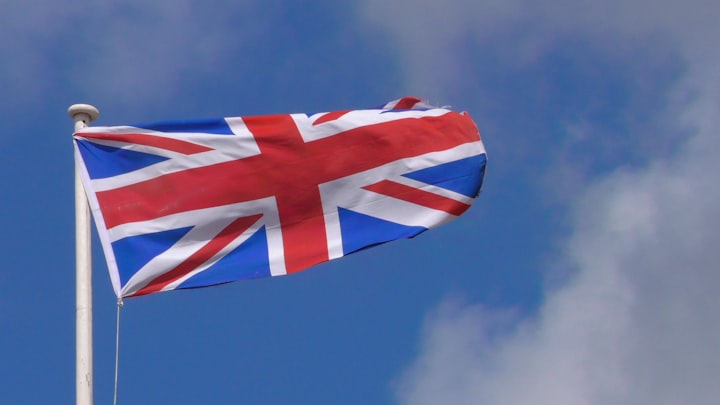Historical Development and Evolution of the Union Jack
Design, Symbolism and Controversies Surrounding the Union Jack

Design:
The Union Jack consists of three different flags superimposed on each other: the cross of St. George (representing England) in red, the cross of St. Andrew (representing Scotland) in white, and the cross of St. Patrick (representing Ireland) in red. The design is symmetrical, with the cross of St. George placed upright in the center and the crosses of St. Andrew and St. Patrick intersecting diagonally.
Symbolism:
The Union Jack represents the political union of the countries within the United Kingdom. Each component flag carries its own historical and cultural symbolism:
St. George's Cross: The red cross of St. George is the flag of England and is associated with its patron saint, Saint George. It represents England's Christian heritage and is also used as the flag of the Church of England. St. George's Cross has been associated with England since the Middle Ages.
St. Andrew's Cross: The white diagonal cross on a blue field represents Scotland and is associated with its patron saint, Saint Andrew. It is believed to have originated from a medieval legend in which a white cross appeared in the sky during a pivotal battle. St. Andrew's Cross has been used as the Scottish flag since the 9th century.
St. Patrick's Cross: The red diagonal cross on a white field represents Ireland and is associated with its patron saint, Saint Patrick. The origins of this flag are uncertain, but it is believed to have been adopted in the late 18th century. St. Patrick's Cross is used as the flag of Northern Ireland and was previously used to represent the entire island of Ireland.
History of Creation:
The Union Jack's design was created to symbolize the political union of England and Scotland, which took place in 1707 with the Acts of Union. The flag combined the crosses of St. George and St. Andrew. Later, in 1801, with the union of Great Britain and Ireland, the cross of St. Patrick was incorporated into the flag to represent Ireland. Following Ireland's independence in 1922, the flag continued to represent Northern Ireland within the United Kingdom.
It's important to note that the Union Jack's design and usage have evolved over time, and debates and discussions surrounding its representation and potential redesign have taken place.
This overview provides a glimpse into the design, symbolism, history and controveries that surround the Union Jack. Feel free to explore further to gain a deeper understanding of this iconic national emblem.
Usage in Different Contexts:
The usage of the Union Jack in different contexts has sparked debates. For example, there have been discussions about whether the Union Jack should be flown on public buildings in Scotland, Wales, and Northern Ireland, as some consider it primarily representative of England rather than the devolved nations. There have been calls for alternative flags that better represent the individual nations within the United Kingdom.
Flag Designs for Devolved Nations:
The devolved nations of Scotland, Wales, and Northern Ireland have their own flags, namely the Saltire (the flag of Scotland), the Red Dragon (the flag of Wales), and the St. Patrick's Cross (the flag of Northern Ireland). Some debates have focused on whether these flags should be given more prominence and recognition, potentially replacing or having equal status alongside the Union Jack in certain contexts.
Representation and Identity:
The Union Jack's representation of the United Kingdom's history and relationships has been a subject of discussion. Some argue that the flag primarily symbolizes British imperialism and colonialism, which can be controversial and offensive to certain communities, both domestically and internationally. Others argue that it represents a shared history and unity among the countries of the United Kingdom.
Post-Brexit Implications:
The United Kingdom's withdrawal from the European Union (Brexit) has further fueled discussions on the Union Jack's significance. The decision to leave the EU has raised questions about the relationship between the United Kingdom and its devolved nations, as well as the potential impact on national identities and the symbolism associated with the Union Jack.
Redesign Proposals:
There have been occasional proposals for redesigning the Union Jack to better reflect the constituent countries or to address perceived imbalances. Some suggestions include incorporating elements from the flags of Scotland, Wales, and Northern Ireland into the Union Jack, or creating a new flag entirely. However, any changes to the flag's design would likely be met with considerable debate and resistance.
It's important to note that these controversies and debates reflect varying perspectives and opinions. The discussions surrounding Union Jack's usage, symbolism, and representation highlight the complex nature of national identity and the ongoing dialogue about the relationship between the United Kingdom's constituent nations.





Comments
There are no comments for this story
Be the first to respond and start the conversation.